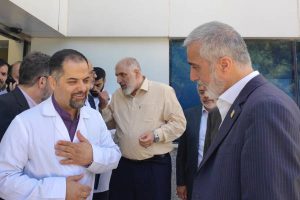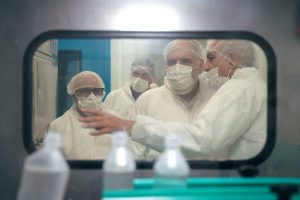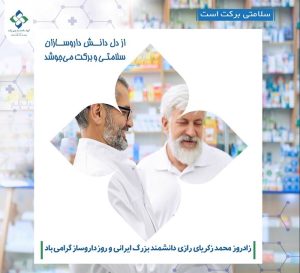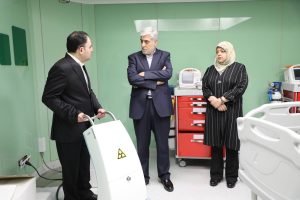
Climate Change on Infectious Diseases in Iran
Barekat Health & Pharmaceutical Group: Climate change, as one of the greatest challenges of the 21st century, has had extensive impacts on public health. These changes include long-term alterations in temperature patterns, precipitation, and the frequency of natural phenomena such as droughts and floods, which can directly and indirectly affect the transmission and prevalence of infectious diseases. Infectious diseases, caused by the transmission of microbes, viruses, fungi, and parasites to humans or other organisms, are recognized as one of the major health challenges globally.
In Iran, due to its unique geographic and climatic conditions, examining the impacts of climate change on infectious diseases is crucial.
Review of Previous Research
– Water and Foodborne Diseases: Past research has shown that climate change, including rising temperatures and changing precipitation patterns, can lead to increased prevalence of water and foodborne diseases. Some studies indicate that increased temperature and humidity can heighten the incidence of diarrheal diseases in rural areas of Iran.
– Vector-Borne Diseases: One of the significant impacts of climate change is the alteration in the distribution patterns of disease-carrying insects. A 2018 study demonstrated that rising temperatures have created new areas in Iran conducive to malaria transmission, with climate change potentially exposing more regions to malaria risk.
– Airborne Diseases: Climate change can also affect the prevalence of airborne diseases. A 2019 study found that changes in precipitation and temperature patterns might influence the incidence of respiratory diseases such as influenza.
However, a major critique of previous research is the lack of long-term and continuous data. Many studies are based on short-term data, which may not accurately reflect long-term and sustained changes. Additionally, past research has often focused on specific regions, potentially limiting the generalizability of results. Furthermore, deficiencies in predictive models are another critique.
Research on Direct & Indirect Effects
– Direct Effects: Many studies have explored the direct effects of climate change, such as rising temperatures, changing precipitation patterns, and severe weather events, on the prevalence of infectious diseases. For example, a 2020 study indicated that increasing temperatures could alter the seasonality patterns of respiratory diseases like influenza.
– Indirect Effects: Climate change can also have indirect effects on the spread of infectious diseases. For instance, changes in ecosystems and the destruction of natural habitats can lead to increased human contact with disease-carrying animals. Some research suggests that deforestation and changes in natural habitats have increased contact with malaria-carrying mosquitoes.
Research on Adaptation and Mitigation
– Developing Adaptive Strategies: Future research should focus on developing adaptive strategies to mitigate the effects of climate change on infectious disease prevalence. For example, research on improving health infrastructure, enhancing access to clean drinking water, and raising public awareness could help reduce negative impacts.
– Leveraging Modern Technologies: Utilizing modern technologies such as telemedicine and warning systems can improve responses to disease outbreaks in areas affected by climate change. Research into the application of virtual reality for public health education and community preparedness could also be beneficial.
– Strengthening Health Systems: Future research should focus on strengthening health systems and creating capacities to respond to climate-related health crises. Developing preparedness programs for health emergencies and establishing crisis management systems can help reduce the negative effects of climate change on public health.
Actions of the Thirteenth Government
Under the Thirteenth Government, issues related to climate change and its impacts on public health have received some attention. However, available information suggests that while efforts and actions have improved, there is still a need for strengthening.
– National Climate Change Document: The Thirteenth Government has made efforts to update and implement the national climate change document, which includes strategies and programs for reducing greenhouse gas emissions and adapting to climate changes.
– Increased International Cooperation: The Raisi administration has worked to enhance international cooperation by participating in global and regional climate-related programs and projects, including collaborations with organizations like the United Nations and its environmental programs.
– Investment in Research: The Thirteenth Government has sought to allocate funding for research on climate change and its impacts on public health, supporting researchers and universities in this field.
Attention to climate change and its effects on infectious diseases under the Thirteenth Government, considering the country’s macro policies and the priorities of the Ministry of Health, Treatment, and Medical Education, can vary. To examine this, several aspects can be considered:
Macro Policies & Programs
1. National and Strategic Programs: Are there plans in national documents and development programs, such as the Sixth Development Plan, to address climate change and its effects on public health?
2. Relevant Organizations: What roles have organizations like the Department of Environment and the Ministry of Health played in this area? Have specific actions been taken to monitor and address the effects of climate change on infectious diseases?
Scientific Research & Studies
1. Research and Publications: Review the number and quality of research studies and scientific papers published on climate change and infectious diseases during this period.
2. Conferences and Seminars: Assess the number and participation in conferences and seminars related to this topic.
Practical and Operational Actions
1. Prevention and Control Programs: Evaluate the government’s practical actions in preventing and controlling infectious diseases related to climate change.
2. Education and Awareness: Review public and professional education programs regarding the effects of climate change on infectious diseases.
International Cooperation
1. Participation in International Projects: Examine the extent of cooperation between the Thirteenth Government and international organizations in the field of climate change and infectious diseases.
2. Diplomatic Interactions: What role has Iran’s foreign policy played in strengthening regional and international cooperation to address climate change impacts?
Recommendations for Policymakers
Policymakers should develop and implement comprehensive and integrated policies to address the impacts of climate change on public health. These policies should include preventive, adaptive, and mitigative measures. Investment in research and the development of new technologies can aid in improving responses to infectious disease outbreaks. Establishing research centers and supporting researchers can lead to new knowledge and technologies. International and regional collaborations are also crucial. Policymakers should focus on international and regional cooperation to address the impacts of climate change on public health, including knowledge exchange and joint program implementation.
Conclusion
Climate change significantly impacts the prevalence of infectious diseases in Iran, with past research indicating both direct and indirect effects on public health. Critiques of past research include the lack of long-term data, deficiencies in predictive models, and insufficient geographic coverage. Future research should involve developing more accurate models, collecting long-term data, expanding geographic coverage, and fostering international collaborations. By conducting more comprehensive and precise research and implementing comprehensive policies and international cooperation, it is possible to mitigate the negative impacts of climate change on public health in Iran.
-
Barkat Group specialized meeting

-
Safa Appointed as Barekat General Director

-
Barekat Health & Pharmaceutical Group at the 10th Iran Pharma Exhibition

-
Ali Safa visits Sobhan Oncology & Sobhan Darou

-
Pirsalehi & Safa visit Saman Daroo 8 Knowledge-based Company

-
Barekat Managing Director Visits Samen Pharmaceutical Company

-
Honoring Pharmacists’ Day

-
Barekat Top Executives Visiting to Barekat Hospital

